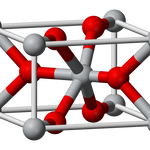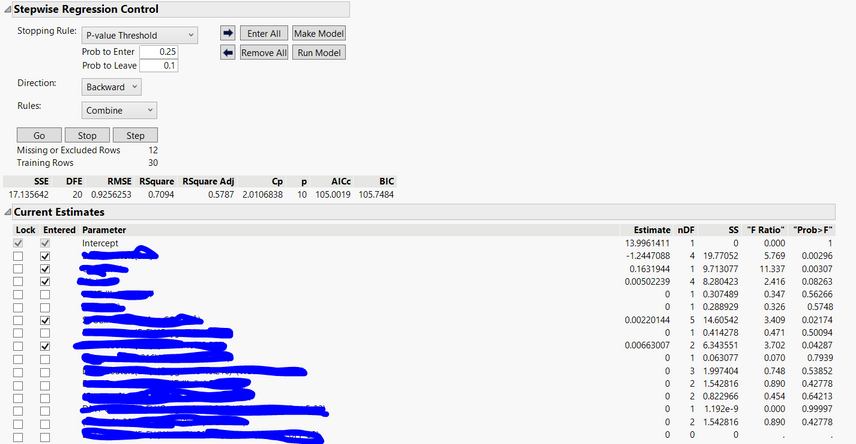- JMP will suspend normal business operations for our Winter Holiday beginning on Wednesday, Dec. 24, 2025, at 5:00 p.m. ET (2:00 p.m. ET for JMP Accounts Receivable).
Regular business hours will resume at 9:00 a.m. EST on Friday, Jan. 2, 2026. - We’re retiring the File Exchange at the end of this year. The JMP Marketplace is now your destination for add-ins and extensions.
- Subscribe to RSS Feed
- Mark Topic as New
- Mark Topic as Read
- Float this Topic for Current User
- Bookmark
- Subscribe
- Mute
- Printer Friendly Page
Discussions
Solve problems, and share tips and tricks with other JMP users.- JMP User Community
- :
- Discussions
- :
- Fit Model pValues change when removing statistically insignificant interactions,...
- Mark as New
- Bookmark
- Subscribe
- Mute
- Subscribe to RSS Feed
- Get Direct Link
- Report Inappropriate Content
Fit Model pValues change when removing statistically insignificant interactions, why?
JMP version 17
I have a question about the fit model pValues.
When you put interactions into the fit model and then perform the "stepwise" personality. You can remove extraneous interactions using the pValue threshold. See below:
Here I have the regression set to remove any interaction that has a Pvalue more than 0.1. However, when I go to make the model with "standard least squares" personality and "Effect Leverage" Emphasis, I get Pvalues above 0.1 for the same interactions that I just saw in the Regression Control. Why? See below:
Additionally, when you remove the worst of the interactions (based on highest pValue), some of the other interactions get better pValues--to the point of becoming statistically significant, when before the deletion, they were not. I assume that the interactions removed do have some effect and that effect must then be redistributed to the other variables, but I don't understand why it makes such a big difference or what is really going on. See below (yes, matching colors indicate the same interactions in the two "effect summary" images).
I am a chemist and I have only the most basic of knowledge of statistics. So, this may be a simple enough answer for an experienced user, but I feel like I am running blind with these models. At what point do you actually know that your model is good? When do you know to remove certain variables? What is the reasoning behind removing certain interactions over others-purely based on the statistics?
Any help would be appreciated. Thank you.
Accepted Solutions
- Mark as New
- Bookmark
- Subscribe
- Mute
- Subscribe to RSS Feed
- Get Direct Link
- Report Inappropriate Content
Re: Fit Model pValues change when removing statistically insignificant interactions, why?
The simple answer is every model and subsequent significance values are contingent on the terms in the model. Change the terms in the model and the statistics will likely change. Now for your situation, I don't have any context (e.g., Is this observational data or is this from a designed experiment?). If you are using observational data (not from a sampling plan), then there may be other issues. Have you tested for multicollinearity? (If you right click on the parameter estimates table, you can select VIF to get a look at this issue.) My advice for model building, is to start with the SME. What are the hypotheses that support terms being in the model? Design sampling plans/DOE to get insight into those hypotheses. Plan on iterating. I never rely solely on one statistic to determine appropriate model effects (e.g., p-values). You need to assess multiple elements of the model (e.g., R-square-R-square adjusted delta, RMSE, Residuals) and never turn off engineering/science.
- Mark as New
- Bookmark
- Subscribe
- Mute
- Subscribe to RSS Feed
- Get Direct Link
- Report Inappropriate Content
Re: Fit Model pValues change when removing statistically insignificant interactions, why?
The simple answer is every model and subsequent significance values are contingent on the terms in the model. Change the terms in the model and the statistics will likely change. Now for your situation, I don't have any context (e.g., Is this observational data or is this from a designed experiment?). If you are using observational data (not from a sampling plan), then there may be other issues. Have you tested for multicollinearity? (If you right click on the parameter estimates table, you can select VIF to get a look at this issue.) My advice for model building, is to start with the SME. What are the hypotheses that support terms being in the model? Design sampling plans/DOE to get insight into those hypotheses. Plan on iterating. I never rely solely on one statistic to determine appropriate model effects (e.g., p-values). You need to assess multiple elements of the model (e.g., R-square-R-square adjusted delta, RMSE, Residuals) and never turn off engineering/science.
Recommended Articles
- © 2025 JMP Statistical Discovery LLC. All Rights Reserved.
- Terms of Use
- Privacy Statement
- Contact Us




